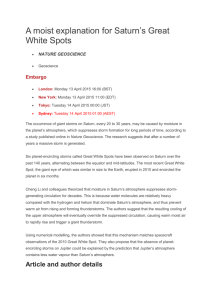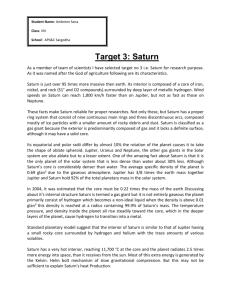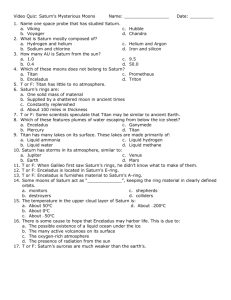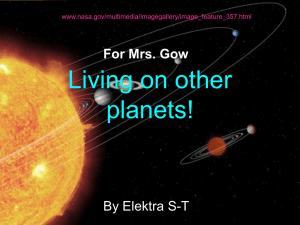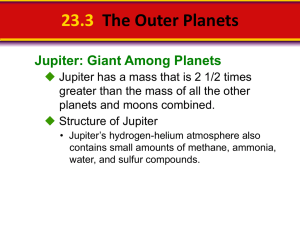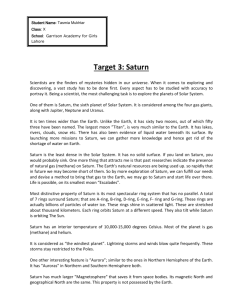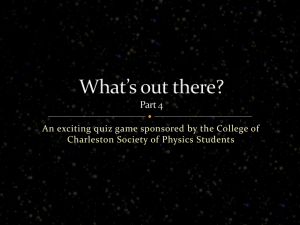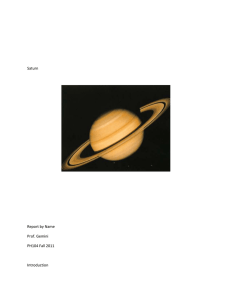Khizra - Suparco
advertisement
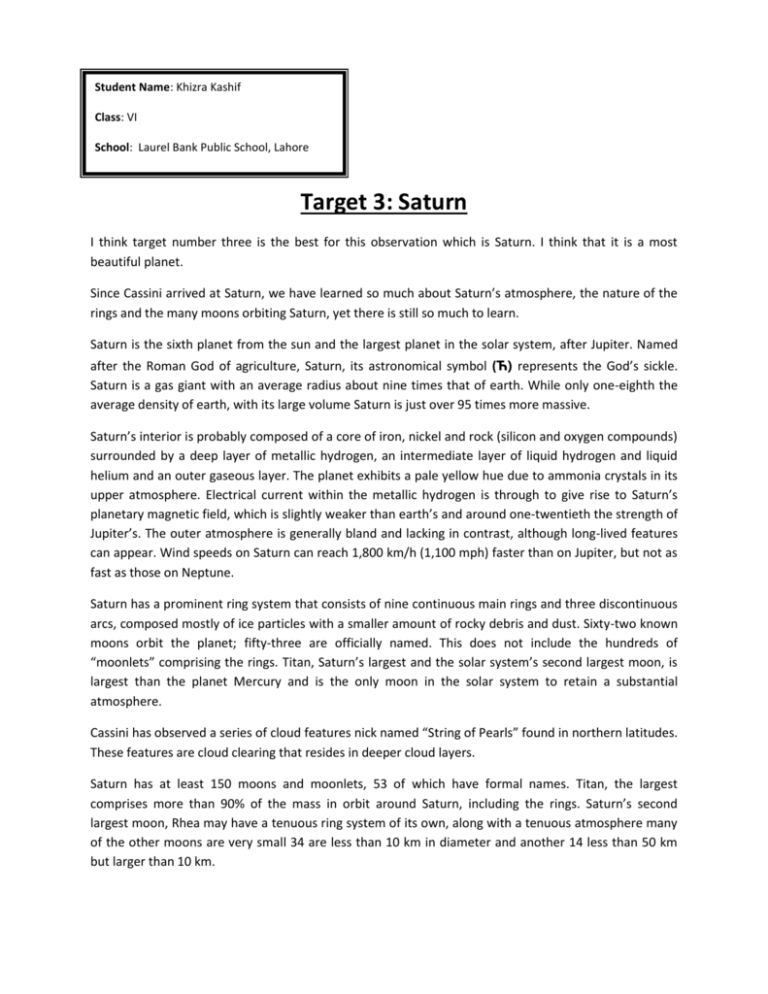
Student Name: Khizra Kashif Class: VI School: Laurel Bank Public School, Lahore Target 3: Saturn I think target number three is the best for this observation which is Saturn. I think that it is a most beautiful planet. Since Cassini arrived at Saturn, we have learned so much about Saturn’s atmosphere, the nature of the rings and the many moons orbiting Saturn, yet there is still so much to learn. Saturn is the sixth planet from the sun and the largest planet in the solar system, after Jupiter. Named after the Roman God of agriculture, Saturn, its astronomical symbol (Ћ) represents the God’s sickle. Saturn is a gas giant with an average radius about nine times that of earth. While only one-eighth the average density of earth, with its large volume Saturn is just over 95 times more massive. Saturn’s interior is probably composed of a core of iron, nickel and rock (silicon and oxygen compounds) surrounded by a deep layer of metallic hydrogen, an intermediate layer of liquid hydrogen and liquid helium and an outer gaseous layer. The planet exhibits a pale yellow hue due to ammonia crystals in its upper atmosphere. Electrical current within the metallic hydrogen is through to give rise to Saturn’s planetary magnetic field, which is slightly weaker than earth’s and around one-twentieth the strength of Jupiter’s. The outer atmosphere is generally bland and lacking in contrast, although long-lived features can appear. Wind speeds on Saturn can reach 1,800 km/h (1,100 mph) faster than on Jupiter, but not as fast as those on Neptune. Saturn has a prominent ring system that consists of nine continuous main rings and three discontinuous arcs, composed mostly of ice particles with a smaller amount of rocky debris and dust. Sixty-two known moons orbit the planet; fifty-three are officially named. This does not include the hundreds of “moonlets” comprising the rings. Titan, Saturn’s largest and the solar system’s second largest moon, is largest than the planet Mercury and is the only moon in the solar system to retain a substantial atmosphere. Cassini has observed a series of cloud features nick named “String of Pearls” found in northern latitudes. These features are cloud clearing that resides in deeper cloud layers. Saturn has at least 150 moons and moonlets, 53 of which have formal names. Titan, the largest comprises more than 90% of the mass in orbit around Saturn, including the rings. Saturn’s second largest moon, Rhea may have a tenuous ring system of its own, along with a tenuous atmosphere many of the other moons are very small 34 are less than 10 km in diameter and another 14 less than 50 km but larger than 10 km. In a few years, Cassini will be getting much closer to Saturn and it will even go in between the ring and we will be able to get more information about Saturn and its rings. So this was my target and I think that Saturn is a great planet and this is my favorite planet from all the planets of the Solar System.


